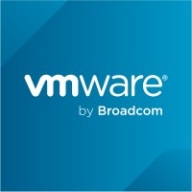

Qlik Replicate and Spring Cloud Data Flow compete in the data integration and management sector. Qlik Replicate may have the upper hand due to its real-time change data capture and extensive connector capabilities, while Spring Cloud Data Flow is notable for its programming flexibility and integration with Spring Boot applications.
Features: Qlik Replicate handles diverse data management tasks, offers real-time change data capture, and supports efficient data loading. Its user-friendly interface and extensive connectors further enhance its capabilities. Spring Cloud Data Flow provides flexibility in programming models, strong integration with Spring Boot, and a plug-and-play model with auto-configuration features for microservices orchestration.
Room for Improvement: Qlik Replicate could improve its user-friendliness and error messaging, and issues with its pricing model have been noted. Some users express concerns about the performance of its support. Spring Cloud Data Flow users have identified challenges with documentation clarity and community support. Its interface, particularly for Kubernetes integration, could be more intuitive.
Ease of Deployment and Customer Service: Qlik Replicate supports hybrid deployment, allowing flexibility between on-prem and cloud setups, though support experiences vary. Some users praise its thoroughness, while others suggest a need for faster response times. Spring Cloud Data Flow is often deployed on-premises or private cloud, with certain expectations for improvement in community support compared to other tools.
Pricing and ROI: Qlik Replicate's pricing, generally seen as high, is more suited for larger enterprises due to its per-endpoint pricing structure. Despite the high cost, users report significant ROI from database usage savings and operational efficiency. Spring Cloud Data Flow, as an open-source product, appeals with a more cost-effective model, incurring only support service costs, making it attractive for those seeking a low-cost entry point. The pricing strategy marks a clear difference, with Qlik Replicate offering premium features at a higher cost versus Spring Cloud Data Flow's cost flexibility with its open-source framework.
| Product | Market Share (%) |
|---|---|
| Qlik Replicate | 1.9% |
| Spring Cloud Data Flow | 1.1% |
| Other | 97.0% |
| Company Size | Count |
|---|---|
| Small Business | 9 |
| Large Enterprise | 10 |
| Company Size | Count |
|---|---|
| Small Business | 3 |
| Midsize Enterprise | 1 |
| Large Enterprise | 5 |
Qlik Replicate is a data replication solution for replicating data from one source database to another for business intelligence software. It offers data manipulation and transformations, replication without impacting source databases, and ease of use without needing ETL. The solution is stable and user-friendly, with detailed logging and support.
Qlik Replicate has improved the organization by allowing each team to replicate their data into a single-source data location. The most important feature of Qlik Replicate is its ability to replicate and update records without needing a programmer.
Spring Cloud Data Flow is a toolkit for building data integration and real-time data processing pipelines.
Pipelines consist of Spring Boot apps, built using the Spring Cloud Stream or Spring Cloud Task microservice frameworks. This makes Spring Cloud Data Flow suitable for a range of data processing use cases, from import/export to event streaming and predictive analytics. Use Spring Cloud Data Flow to connect your Enterprise to the Internet of Anything—mobile devices, sensors, wearables, automobiles, and more.
We monitor all Data Integration reviews to prevent fraudulent reviews and keep review quality high. We do not post reviews by company employees or direct competitors. We validate each review for authenticity via cross-reference with LinkedIn, and personal follow-up with the reviewer when necessary.